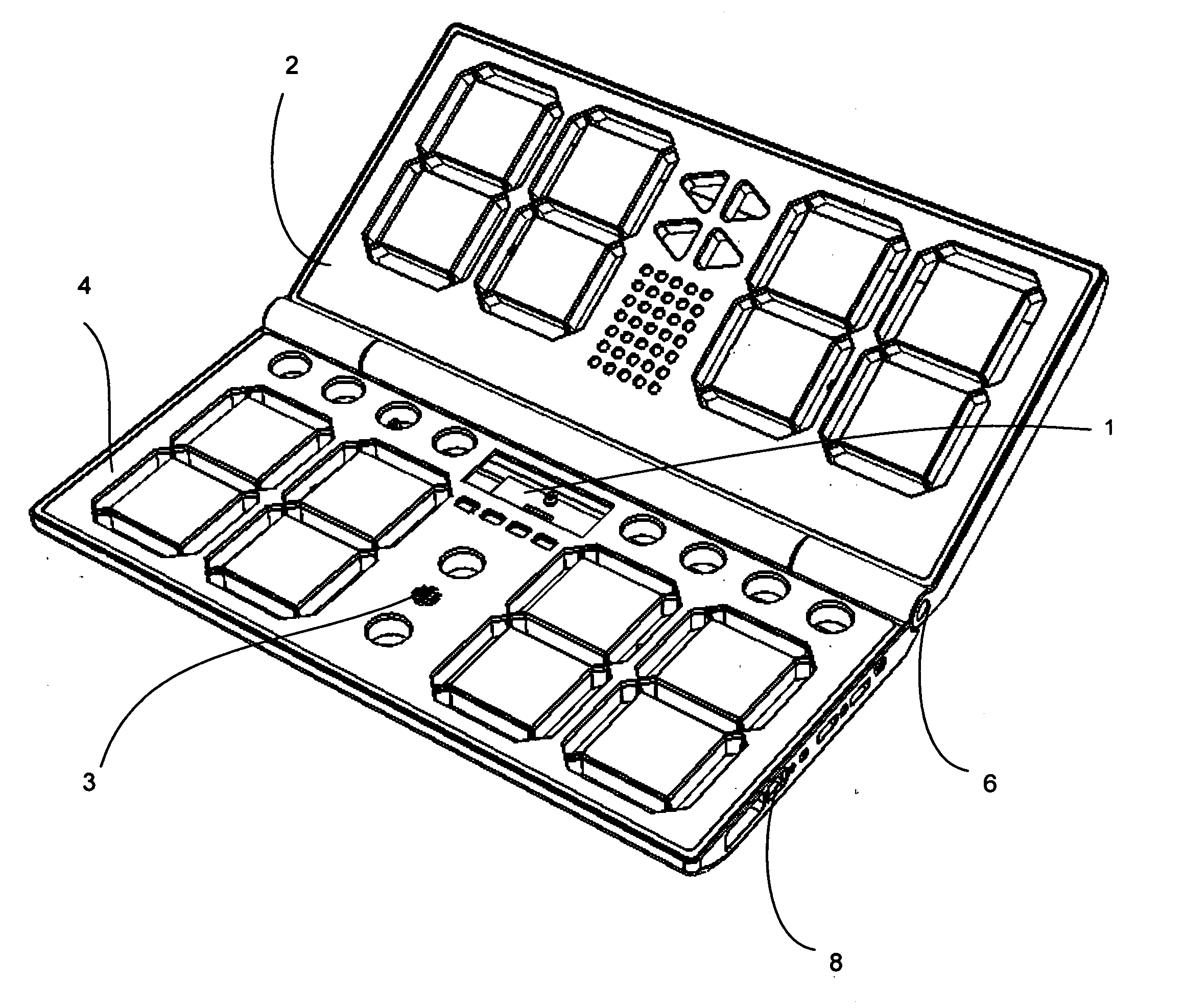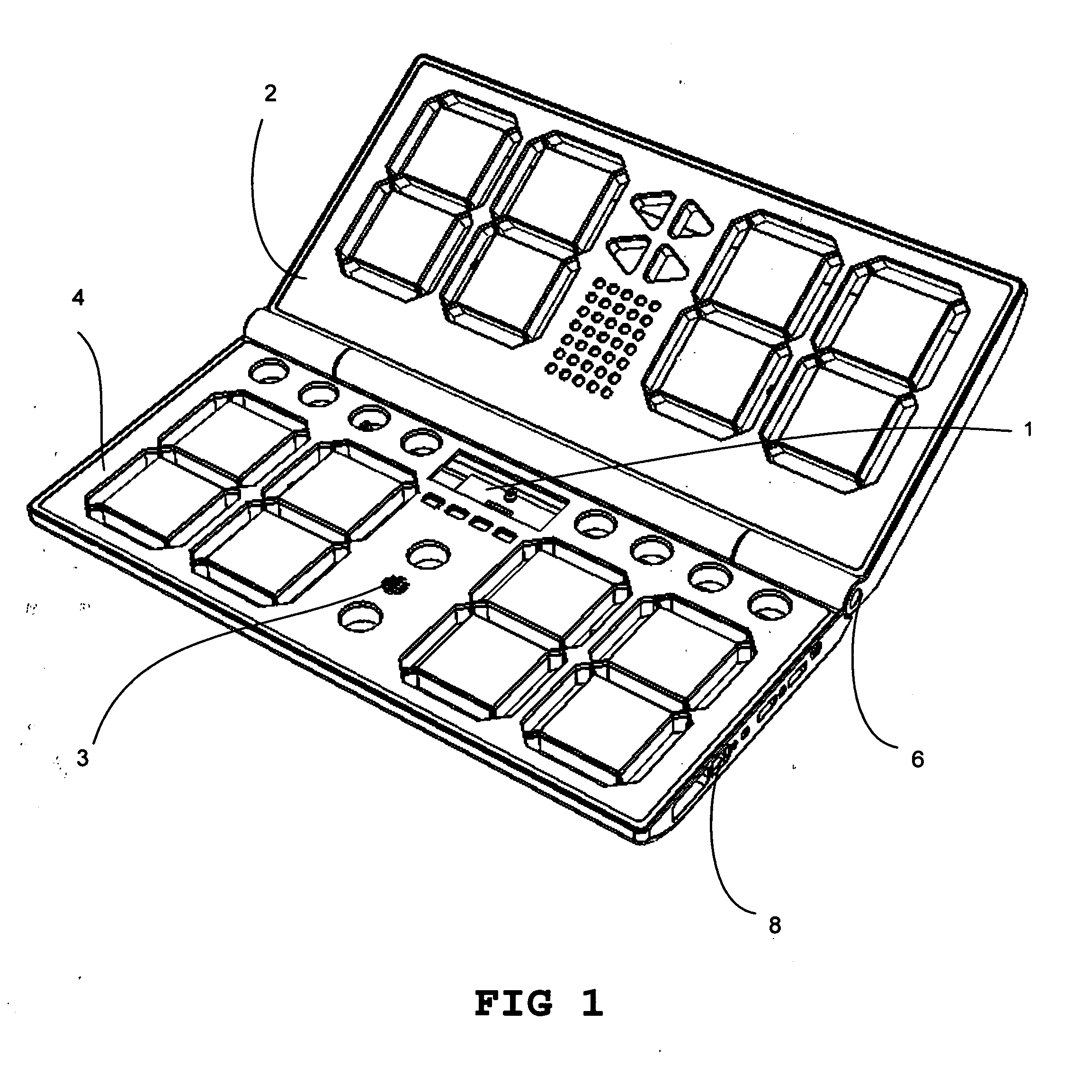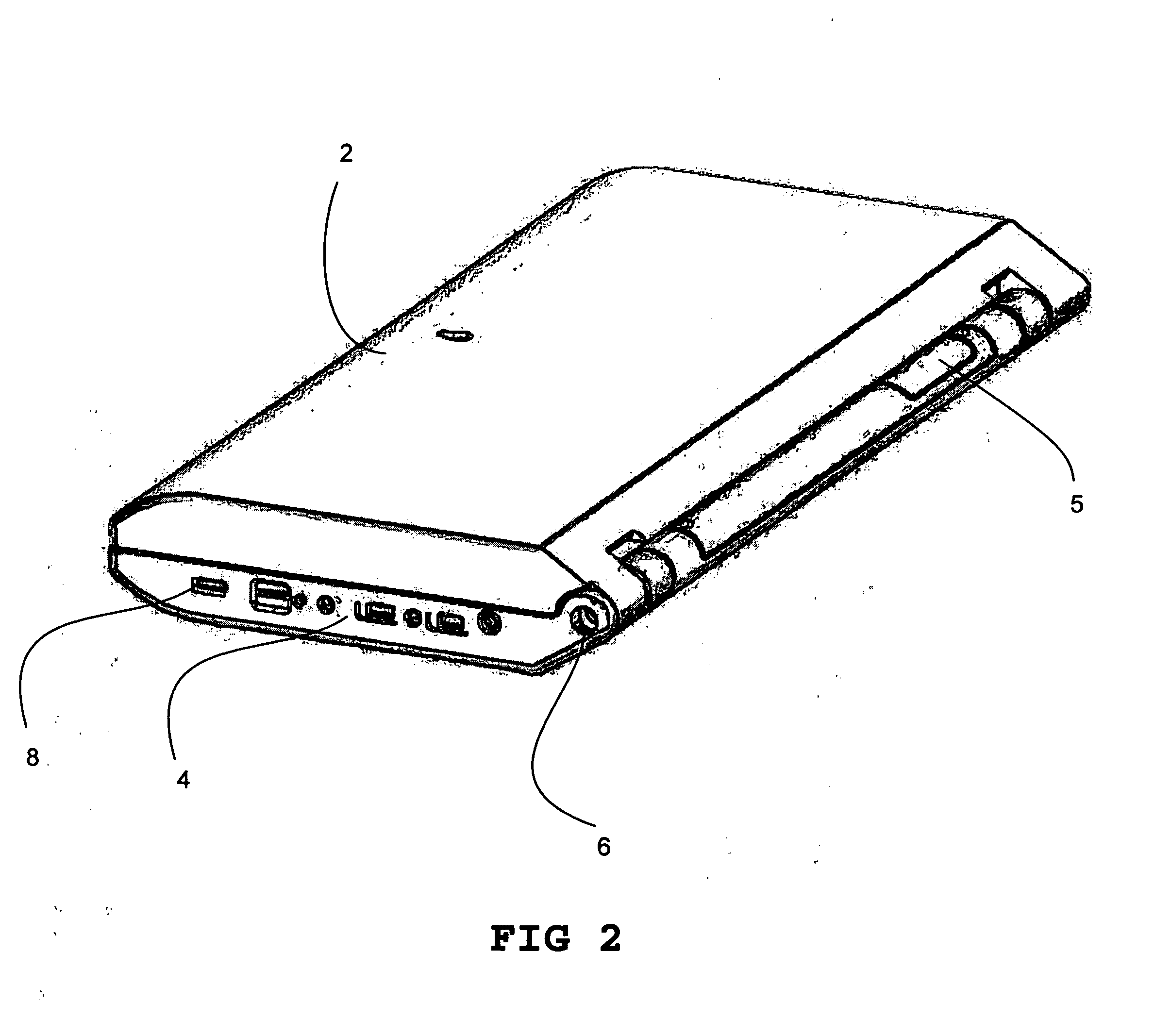Portable electronic scoreboard for officiating a sporting game
a technology of electronic scoreboard and sporting game, which is applied in the field of electronic scoreboard system, can solve the problems of reducing the overall enjoyment of playing and watching the game, and not being able to get a real-time status on the score,
- Summary
- Abstract
- Description
- Claims
- Application Information
AI Technical Summary
Problems solved by technology
Method used
Image
Examples
Embodiment Construction
[0034]The proposed invention is a scoreboard that utilizes a compact, lightweight, robust design that allows for easy transport in any sport bag or backpack, and can be easily setup on site, and simple to operate during the game. In a tournament type of sporting venue, or a semi-competitive club found at a local recreational community centre, this product would allow different groups of players to have access to their own scoring system. For example, in a gymnasium or arena, with multiple badminton courts setup, each court could independently keep their own scores.
[0035]The purpose is to provide a graphical depiction of the physical appearance, and the application of the embodiment. Also included are system diagrams showing the hardware architecture in conjunction with the software algorithms used in the design of the invention.
[0036]With reference to FIG. 1, the device of the present invention has a foldable enclosure (2) and a scoreboard display (4). The foldable configuration all...
PUM
 Login to View More
Login to View More Abstract
Description
Claims
Application Information
 Login to View More
Login to View More - R&D
- Intellectual Property
- Life Sciences
- Materials
- Tech Scout
- Unparalleled Data Quality
- Higher Quality Content
- 60% Fewer Hallucinations
Browse by: Latest US Patents, China's latest patents, Technical Efficacy Thesaurus, Application Domain, Technology Topic, Popular Technical Reports.
© 2025 PatSnap. All rights reserved.Legal|Privacy policy|Modern Slavery Act Transparency Statement|Sitemap|About US| Contact US: help@patsnap.com



